If you’ve had the pleasure of eating Japanese food, you’ll know that many dishes have some element of a soy-based ingredient. When visiting Japan, you’ll see just how many uses have been found for soybeans in meals and snacks for all occasions.
Japan has been able to create some truly magnificent and transformative dishes with the soybean, and it has become a staple in their daily diets. Soybeans have been at the heart of Japanese cuisine for a long time, and for good reason.
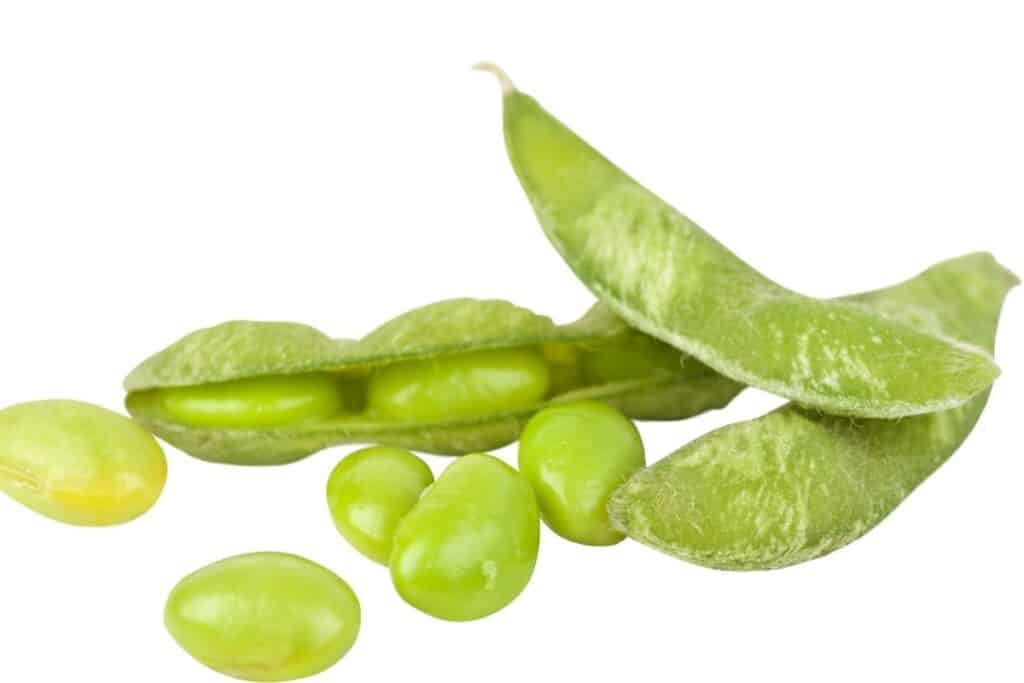
How Japan Started Using Soybeans
Japan didn’t always eat the amount of soybeans in their diets as much as they do now. That being said, Japan has been using soybeans in foods for hundreds of years after Chinese monks showed Japan tofu and hishio.

Hishio has been transformed since its inception to miso and soy sauce, two components heavily used in Japanese cuisine today.
Soybeans have since been used in numerous creative ways to become incorporated into dishes that can be enjoyed at any time of the day. Furthermore, they can be a component of sweet or hearty dishes.
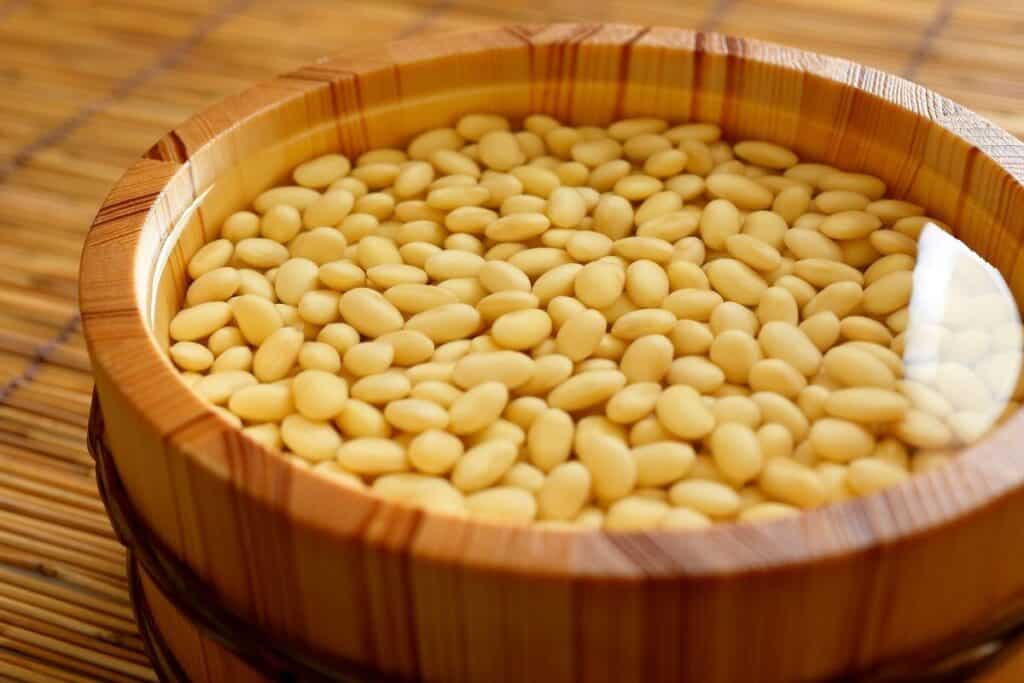
Not only has Japan found so many unique ways to eat soybeans, but they eat more soybeans than anywhere else in the world based on population.
From Hishio To Miso
As mentioned, hishio was the precursor to miso. Hishio was essentially a paste, similar to jam, that was made from fermented soybeans. Often, rice or wheat was added to the mixture.
Miso is not as thick, but is derived from soybeans and was inspired by hishio. Soy sauce then eventually came out of the use of miso.
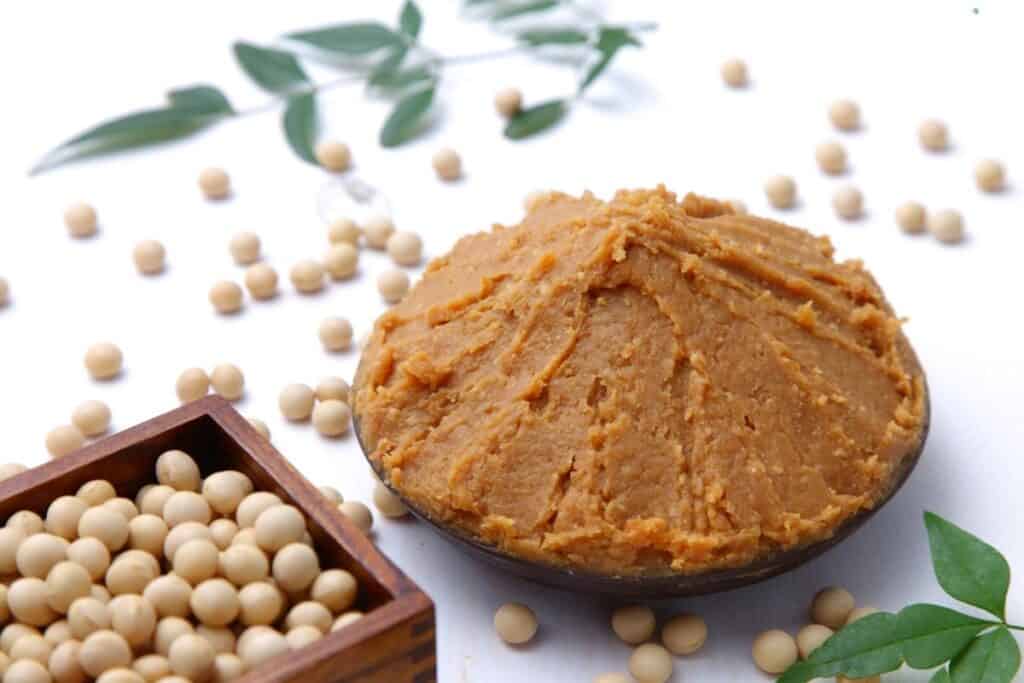
Soybeans As A Vegetarian Protein Source
Buddhism is especially prominent in Japan, and Buddhists follow a pretty strict vegetarian diet. Soybeans are an excellent source of protein and essential vitamins that vegetarian diets often lack.
Furthermore, soybeans are easy to transform into numerous nutritious dishes, and they are inexpensive.
Shojin Ryori
Shojin ryori is a traditional meal often enjoyed by Buddhist monks. It contains a few items made out of soybeans, including different types of tofu, as well as soy sauce. Sometimes what the meal consists of varies, but it is usually a vegan meal made without pungent or strong seasonings.
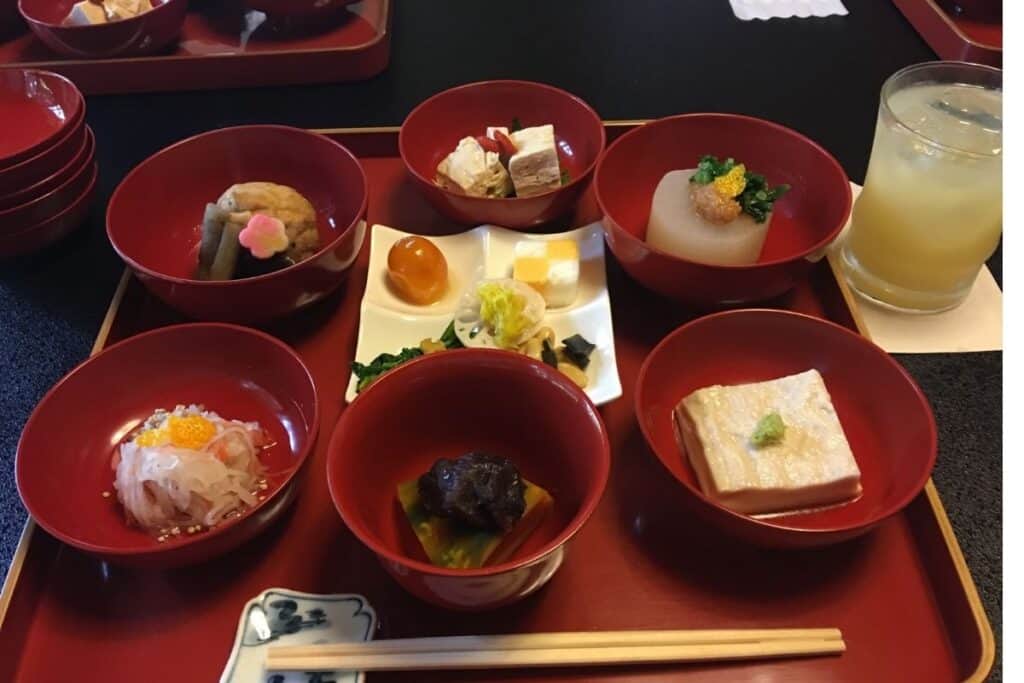
Instead, the flavors are usually enhanced by different oils, as well as by combining different components of the meal together.
A shojin ryori usually consists of several small portions of different items, arranged on a tray in small bowls. You can enjoy a shojin ryori meal yourself at various Japanese restaurants.
Soy Sauce
Soy sauce is to Japanese cuisine what ketchup and mustard are to a Western diet. It is used very often as a dip or condiment to enhance a variety of dishes. Furthermore, it’s also used within cooking to add flavor to dishes.
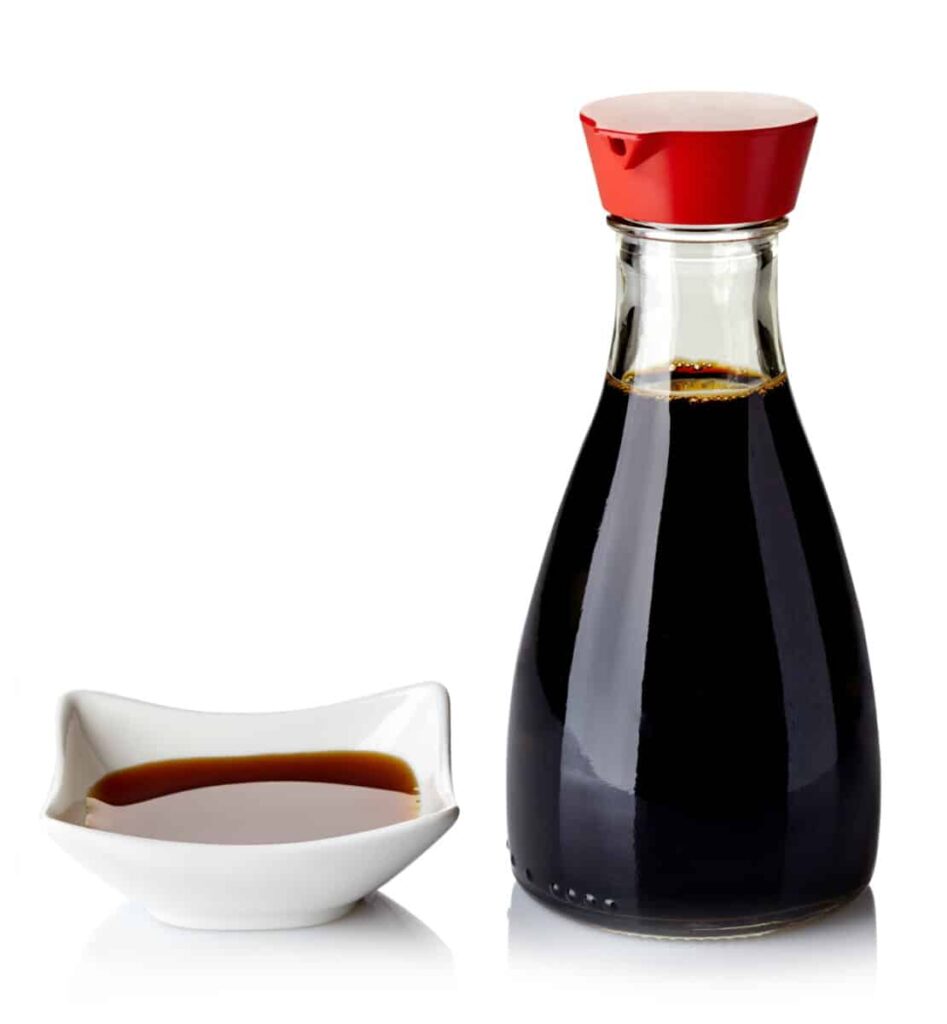
Soy sauce is referred to as shoyu in Japanese. It’s made by steaming soybeans and mixing them together with wheat and rice yeast. This combination will sit for several days until it becomes soy sauce. There is also gluten-free soy sauce that doesn’t use wheat.
Soy sauce is very often at a table with sashimi and sushi, as it is perfect for dipping those small portions in. It can also add some depth to a sauce, a soup broth, or noodle dishes such as udon or ramen.
It will also often be added to meat dishes, such as yakitori chicken skewers, for a nice balance of salty and hearty.
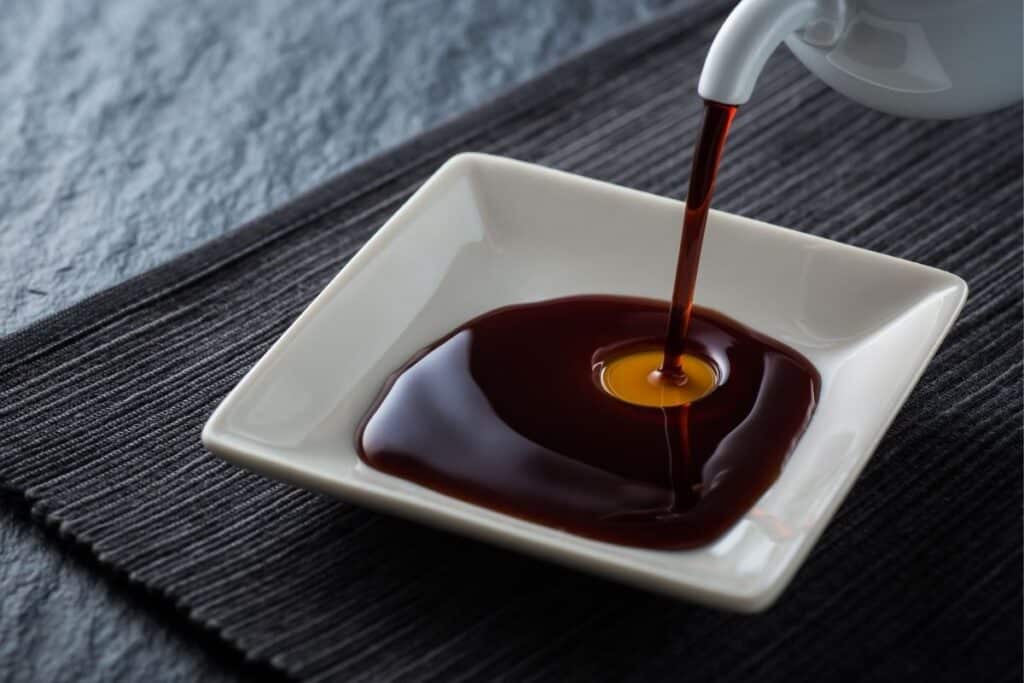
There are many different brands of shoyu from Japan, and they vary in flavor depending on how long the soybeans were fermented for, as well as how much salt or wheat might be added.
Tonyu
Tonyu is the Japanese name for soy milk. While many people know soy milk for being a delicious dairy alternative, it’s typically used for cooking in Japan. Most people don’t drink tonyu as a beverage in Japan or use it in their tea or cereal.
One thing that’s worth a try when you’re in Japan is some soy milk ice cream, as it’s sweet and decadent but it won’t give you a stomach ache on a hot day.
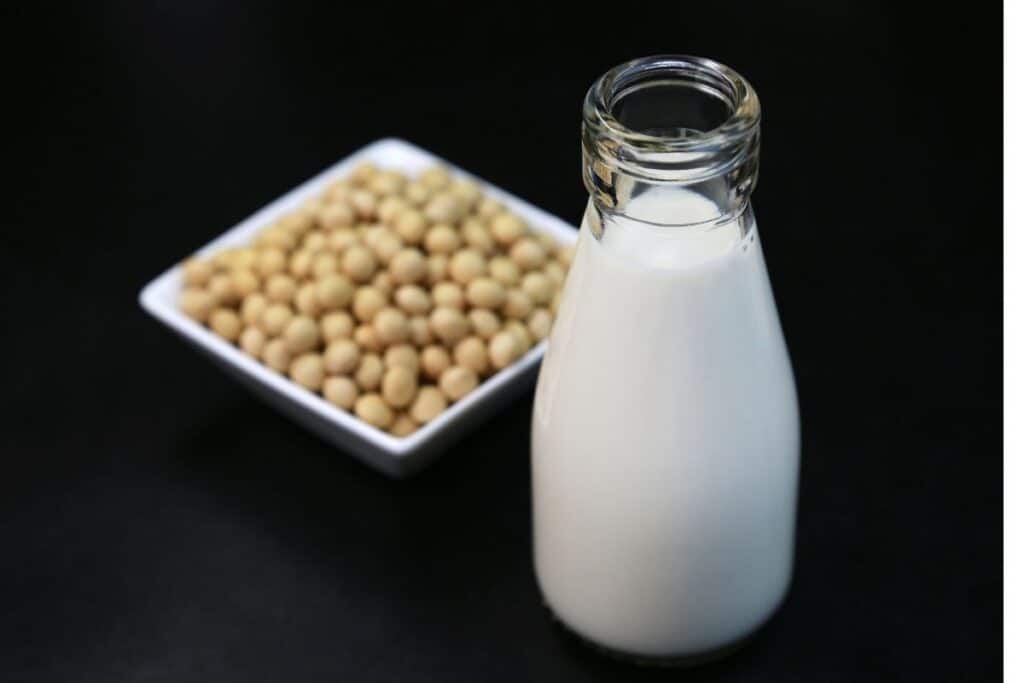
Miso
Miso is also derived from soybeans and is an important component in some of the most loved Japanese dishes. Miso is a paste made with soybeans, water, and an additive such as rice or barley.
Miso can taste a little bit different depending on how long the soybeans are fermented, but it typically has an umami flavor, which is savory.
Miso soup is usually eaten as an appetizer before a meal. Miso is also an ingredient used in ramen, being one of the most popular flavors of ramen served.
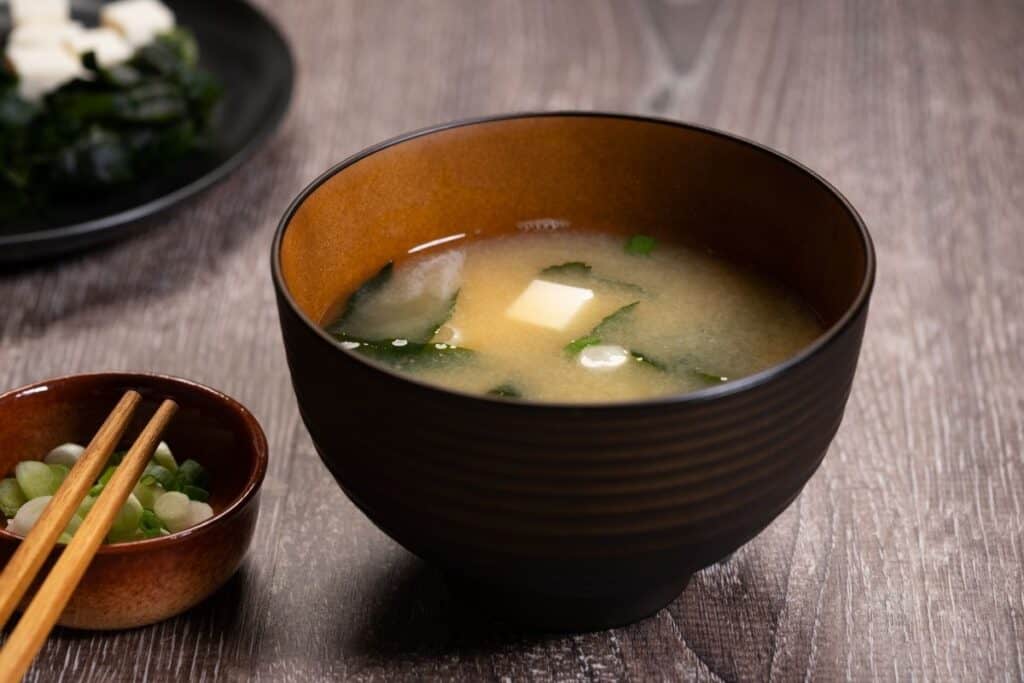
Interestingly enough, miso might vary depending on where you’re eating in Japan, making for a fascinating culinary experience throughout Japan.
Tofu
Tofu is made by turning soybeans into soy milk and mixing it with a coagulant to help it firm up. Tofu can come in a variety of textures, from soft silken to firm blocks.
Tofu is a deliciously airy and versatile food that can be used as a meat substitute but can also complement a variety of dishes.
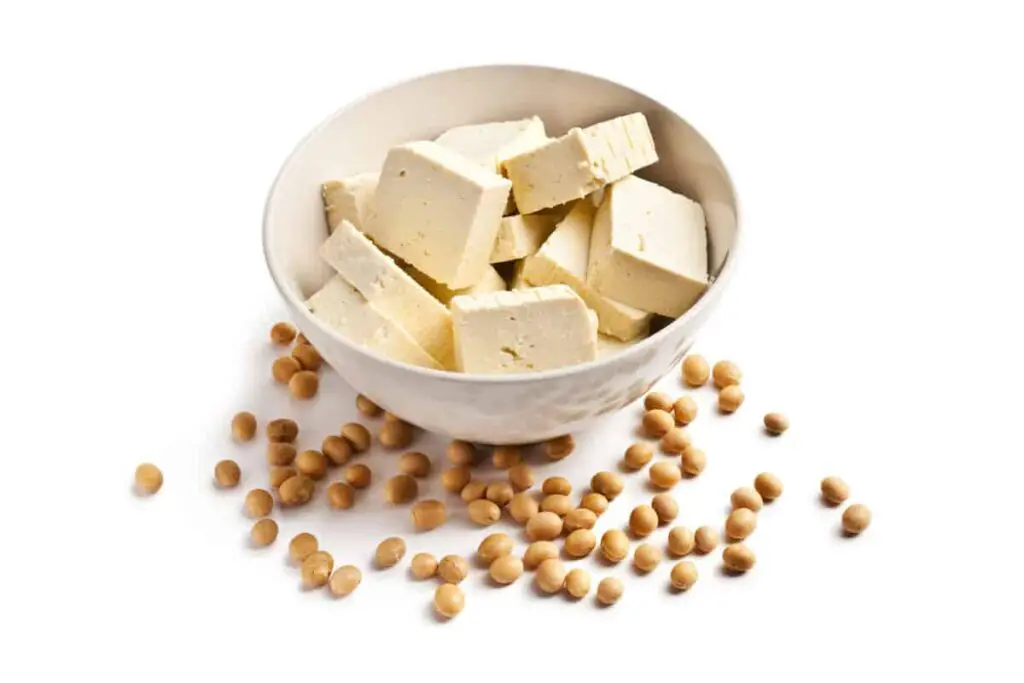
Tofu tends to soak up a lot of the spices and sauces that are used in a dish. It’s also low in calories and offers a boost of plant-based protein to any dish.
You can often find tofu in a variety of soups, noodle dishes, and it’s even used for some delicous Japanese desserts.
Aburaage
Aburaage is tofu that has been deep-fried, often creating a thicker texture that is more malleable. It’s often served as is dipped in sauce or is split apart into a pocket that gets stuffed with rice or other ingredients.
Atsuage is also deep-fried tofu, but it’s made to be thicker and doesn’t get used as a stuffing pocket.
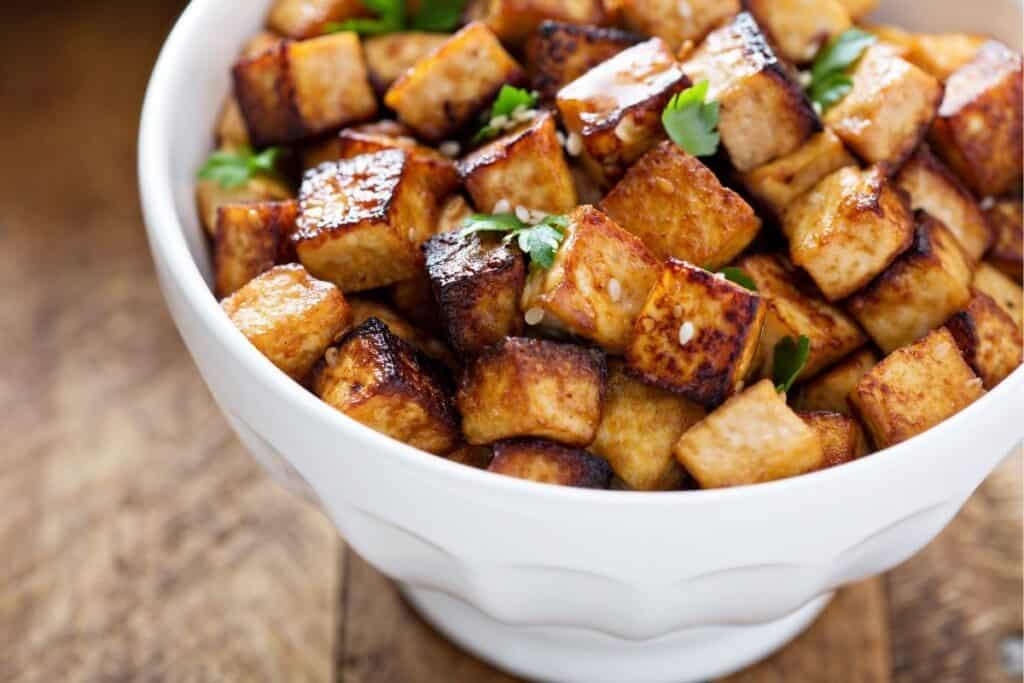
Yuba
Yuba is tofu skin and is a byproduct of making tofu. When soy milk is boiled, there is skin that forms during the process. It’s a tasty way to enjoy soybeans when it’s made fresh, but it is also often dried to be added to dishes afterward.
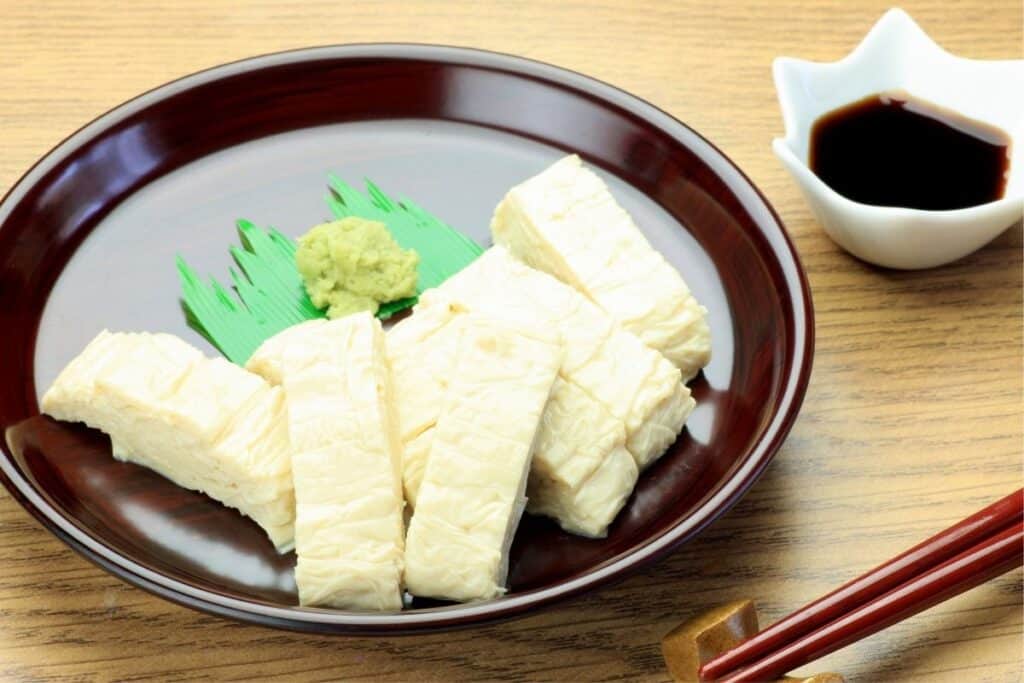
Natto
Natto is another soybean-based food that many Japanese folks enjoy as part of their breakfast. It is made with fermented soybeans, and the flavor is quite strong.
It might take some time to get used to the flavor, but natto is quite nutritious and is used as an addition to many Japanese dishes.
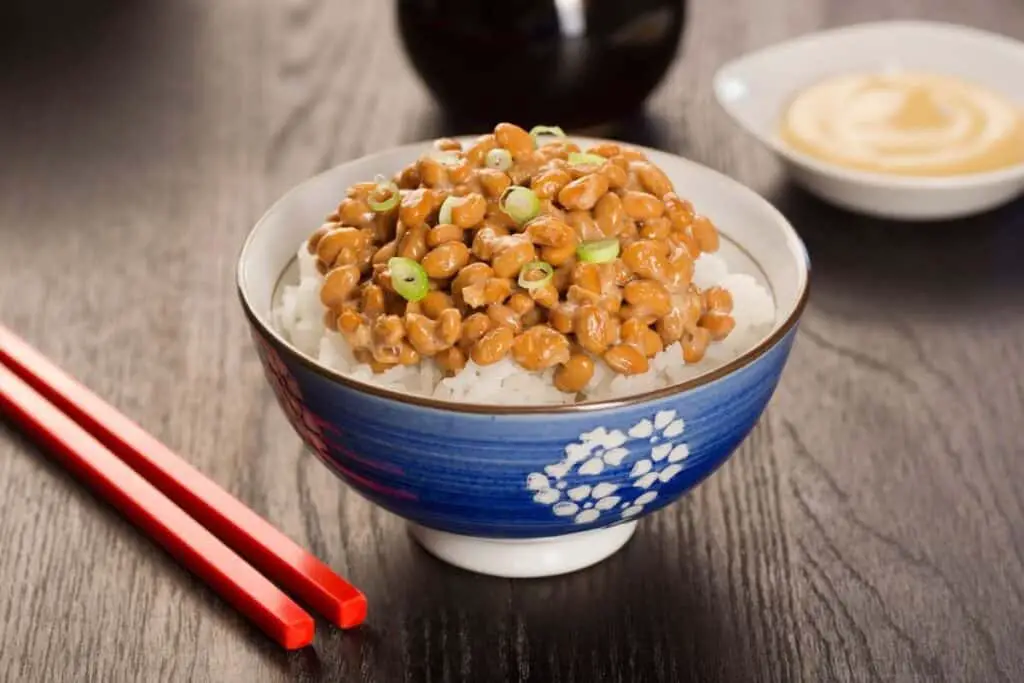
Edamame
Edamame consists of soybeans that have been boiled and salted. The beans are typically served in the pods, and you slide them out of the pod in your mouth.
This allows you to get a nice salty, refreshing bite that pairs well with sake.
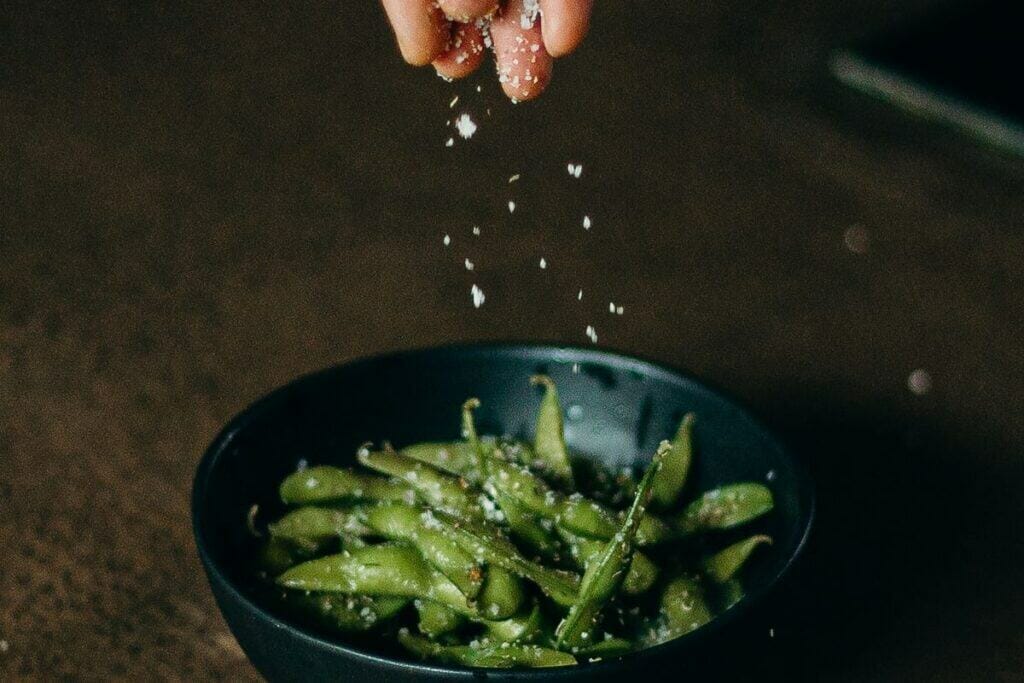
Irimame
Irimame consists of soybeans that have been removed from their pods and are roasted and packaged. They make a perfect healthy snack or can be a little bit more indulgent when they are covered in sweet coatings. They are also sometimes covered in savory or salty flavoring.
There’s also an interesting tradition in Japan where irimame are incorporated called Setsubun.
On Setsubun, the demon comes and appears to kids, who subsequently throw irimame at the demon to make him go away. Afterward, the kids can enjoy the leftover irimame.
Dango
Dango is a street food that is enjoyed often in Japan. They are dumplings made with rice flour and sprinkled with kinoko, which is a sweet flour made of soybean. They are served on a stick and combine sweet and savory flavors quite well.
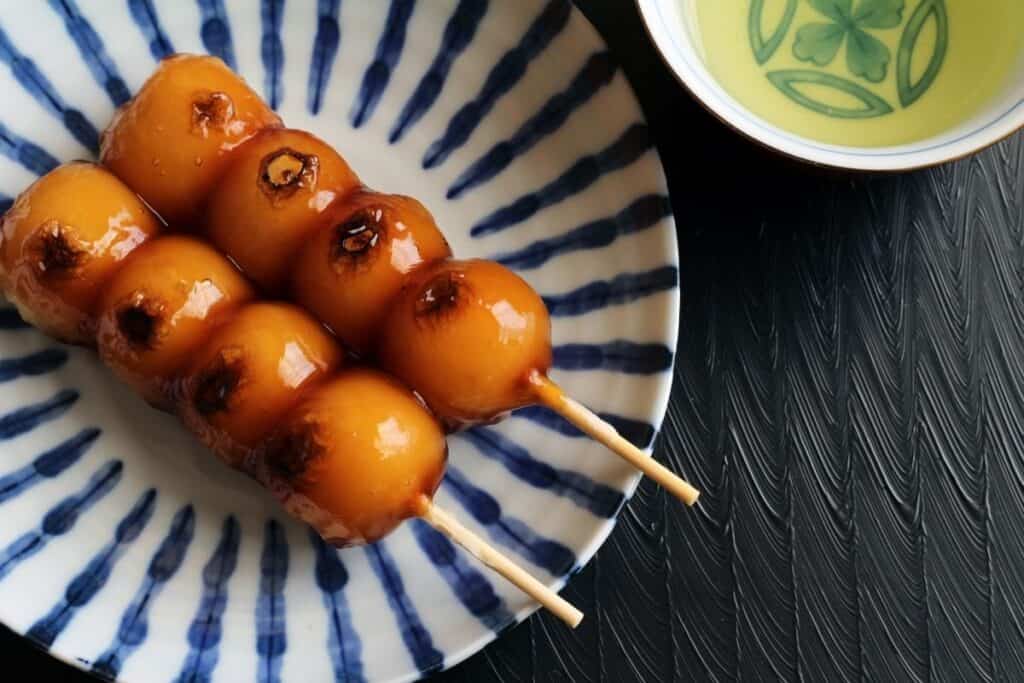
Kinako
Kinako is a soybean-based ingredient that may be less well-known to those who are new to Japanese cuisine. Kinako is a topping that is made from soybeans that are toasted and then crushed into a crumb-like, crunchy addition to a dish.

Higashi
Higashi is little sweets that typically come in boxes, and are crafted into really beautiful, colorful, and artistic designs. These sweets are sometimes made with soy flour. They tend to be very sweet and indulgent, mainly consisting of sugar.

Bean Sprouts
Bean sprouts are made through the unique process of growing soybeans to their sprout form, then harvesting them.
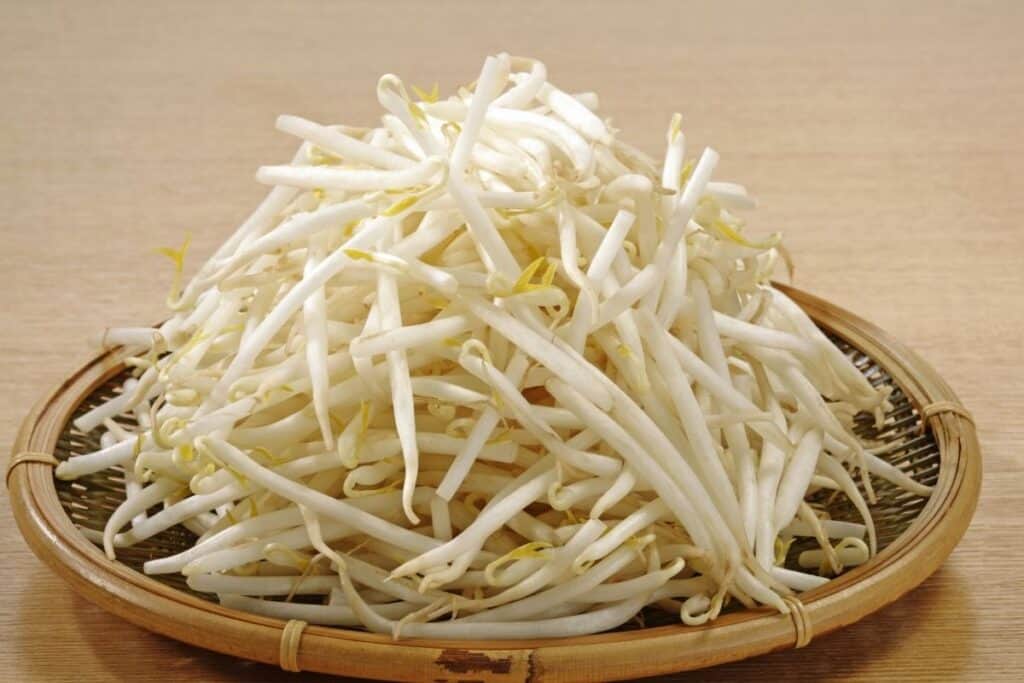
They often add a crunchy bit of protein to a variety of dishes and can be enjoyed raw or cooked. You will often find bean sprouts in ramen and noodle dishes, but they are really complementary to much more than that.










